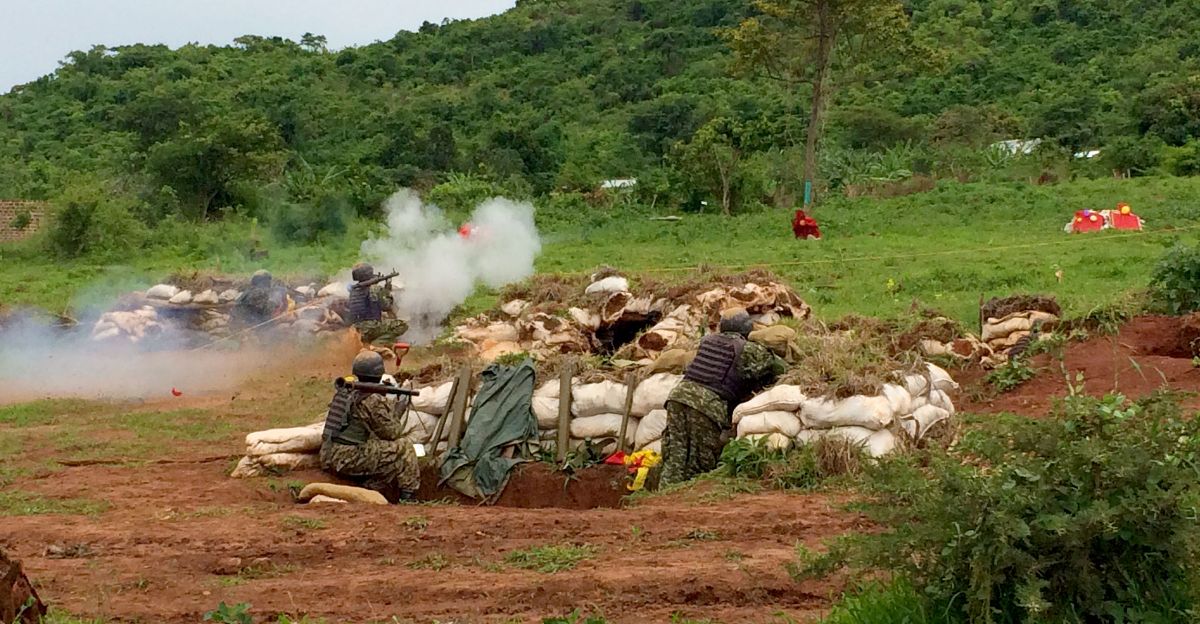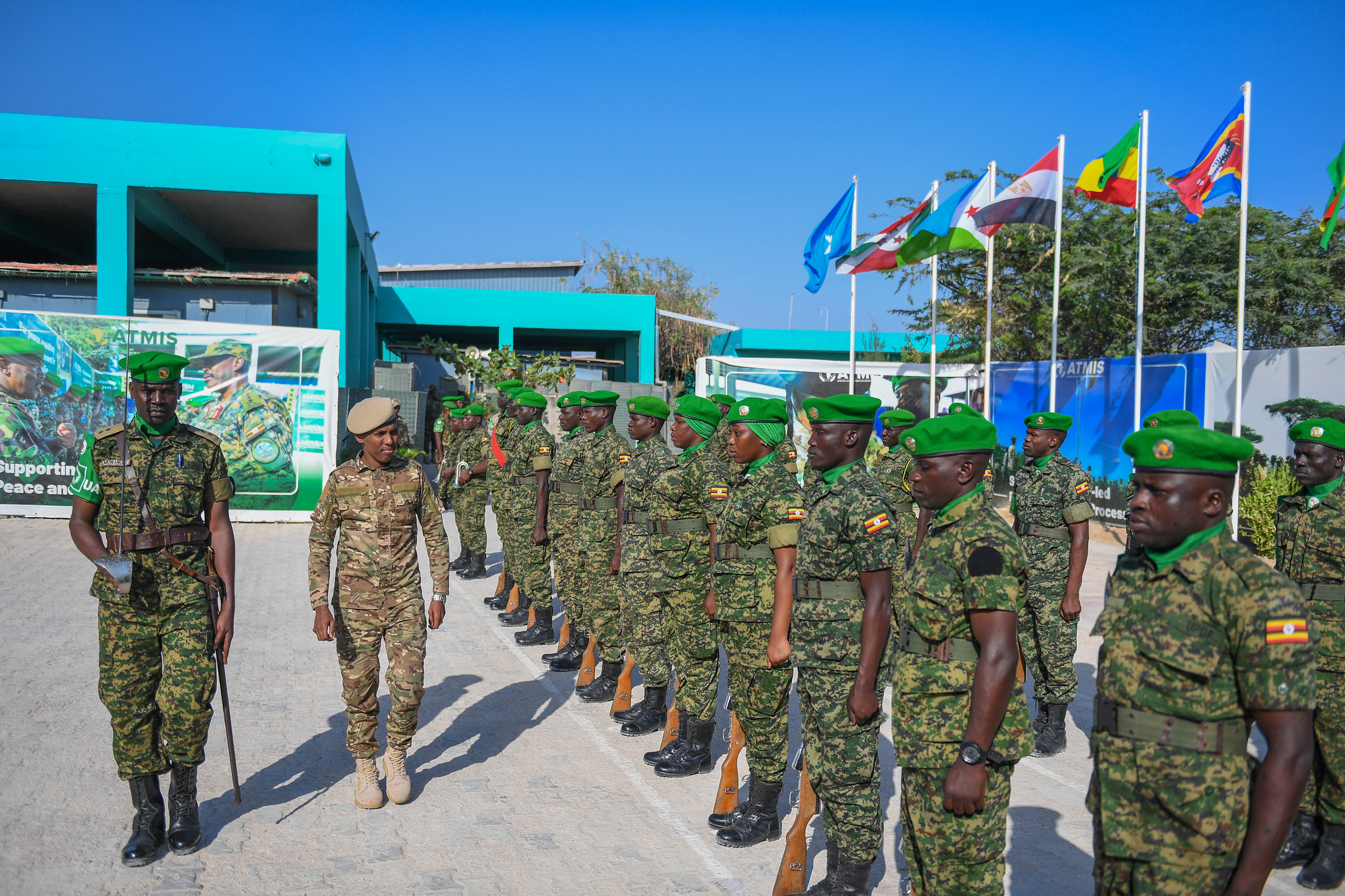Even as Somalia attempts to use rivals Ethiopia and Egypt as counterweights to gain regional support, its domestic tensions threaten regional stability — and the vital Red Sea trade route.
Welcome to The Debrief, from the editors at Factal. Each month, we reflect upon an impactful yet underreported story that has significant regional or global implications. We’ll examine how the story has progressed and how Factal’s coverage has shifted to ensure we are always supplying our members with the most up-to-date, accurate, factual reporting.
If you like what you’re reading, sign up to receive The Debrief in your inbox on the first of every month here.
In December 2024, Ethiopia and Somalia announced a deal, capping a tumultuous year for the Horn of Africa nations that featured fracturing state tensions, regional disputes and a seeming resurgence of al-Shabab. The deal, brokered by Turkey, ostensibly ended a year-long bitter diplomatic dispute after landlocked Ethiopia signed an agreement with the breakaway region of Somaliland in exchange for sea access. But a month into 2025, the details — and wider regional impact — of December’s agreement remain unclear.
Ethiopia’s agreement with Somaliland, which Somalia recognizes as its territory, was just one of several events that plagued Mogadishu last year. President Hassan Sheikh Mohamud’s efforts to review and finalize the constitution led some states to suspend ties with the federal government, and the continued presence of al-Shabab has led to an increasingly unsteady country. Even now, the lasting power of December’s deal remains unclear: Just days after it was signed, Somalia accused Ethiopian troops of deadly border clashes and Ethiopia has yet to publicly scrap the deal with Somaliland, having made clear its goal for seaport access comes at all costs, including possible war with its other neighbor Eritrea.
“The specifics of this new deal between Ethiopia and the Somali government in Mogadishu have not been made public,” Factal editor Owen Bonertz said. “Somalia is not negotiating from a position of power, and Ethiopia is negotiating from a position of power. The fact Ethiopia has not explicitly said ‘We’re pulling out of the port in Somaliland’ would indicate that they might go ahead with it at some point, in addition to gaining access to ports via the Somali federal government.”
Conflict between Christian-majority Ethiopia and Muslim-majority Somalia is not new. Backed by the United States in 2006, Ethiopia invaded and subsequently occupied Somalia to topple the Islamist government, radicalizing political youth groups that went on to form al-Shabab. Somalia continues to accuse Ethiopia of meddling in its internal affairs, which it says threaten to further destabilize the region.
“The love triangle between Somalia, Ethiopia and Jubaland is just opening the door for al-Shabab, making it easier for them to gain territory”
Somalia’s domestic landscape is fragile, weakened by inter-clan conflicts and a diminishing hold over its federal states. In addition to Somaliland declaring independence, the states of Jubaland and Puntland suspended ties with the government in 2024 over its so far botched constitutional and electoral reforms. And, on Dec. 23, Somalia’s foreign ministry claimed Ethiopian forces in Jubaland’s Dooolow attacked a Somali base, killing and injuring troops.
“Since then, Jubaland has ratcheted up tensions with Mogadishu to the point of breaking out into full-on battles for control of some major settlements down there, most of which Jubaland forces have actually won,” Bonertz said. “And in a lot of those instances, there have been reports that Ethiopian troops who happen to be stationed in the region have fought on behalf of the Jubaland forces against the Somali federal government troops.”
“Throughout [Jubaland’s] self-governing status, Ethiopia has supported it and encouraged it to gain more autonomy from the Somali federal government.”
Ethiopia has not officially confirmed its exit from restive Jubaland but remains noticeably absent from the latest iteration of the African peacekeeping mission in Somalia despite talk on both sides of including its troops. Ethiopian troops, however, have exited the restive Bay region district of Dinnsoor, which al-Shabab controlled for years prior to 2015.
“The love triangle between Somalia, Ethiopia and Jubaland is just opening the door for al-Shabab, making it easier for them to gain territory,” Bonertz said. “Al-Shabab has been more active in 2023 and 2024 – if the Somali federal government or the Jubaland government don’t have control over territory in the south, al-Shabab will fill that vacuum.”
The Somali government’s push to move toward direct elections as part of reforms exacerbated power struggles between clans and the political elite, giving al-Shabab more opportunity to exploit the power vacuum.
In Puntland, the state’s military is engaged in extensive operations against the Islamic State as the group expands its foothold in the northeastern mountainous region. The region has issued a slew of restrictions on foreigners in order to curtail Islamic State operations.
“Mogadishu and Addis Ababa are waiting to see if the Trump administration will make any sort of drastic move toward recognizing Somaliland”
All this instability in the Horn of Africa created an opportunity for Egypt, also mired in conflict with Ethiopia over water resources, to form an alliance with Somalia.
Cairo has delivered at least three tranches of weapons to Mogadishu since August 2024. After decades of limited military footprint abroad, the Egypt military positioned itself as a replacement for Ethiopia in the latest African mission against militancy in Somalia, even demanding a leading role.
“Egyptian troops being sent to Somalia is going to be their largest deployment, or their largest military engagement, since the Gulf War in 1991,” Bonertz said. “Egypt’s attempts to get involved in Somalia are mostly to check the power of Ethiopia in the area.”
Ethiopia’s mega dam on the Nile started generating power last year. It has so far refused to negotiate with Egypt, which relies on the river for most of its water, over the fill rate of the dam.
“Such a large dam would significantly impact Egyptian and Sudanese agriculture … part of the reason Egypt is becoming more imperious in Somalia,” Bonertz said.
The rapprochement between Mogadishu and Addis Ababa, however, means that despite Egypt’s efforts to block Ethiopia in the region, it now has to contend with Ethiopia potentially building ports on a body of water it does not touch. Egypt decried Ethiopia’s presence on the Red Sea coast but has not managed to convince its new partner to back out of the deal.
“The Somalia-Ethiopia deal is a reflection of the Mogadishu government feeling like they’re on the back foot, because they see Jubaland successfully holding on to territory and they see Somaliland holding onto territory and governing even more effectively than they do in Mogadishu,” Bonertz said.
“[Now] both Mogadishu and Addis Ababa are waiting to see if the Trump administration will make any sort of drastic move toward recognizing Somaliland, which has been floated and reported to be a very serious thing that they’re considering after he takes office.”
U.S. President Donald Trump’s administration has not yet confirmed its Africa team but the president is widely expected to tap J. Peter Pham as his top diplomat for the region.
Pham has previously expressed confidence in Somaliland as a U.S. partner that can provide a foothold to counter China’s Horn of Africa ambitions, potentially opening a backdraft in a region putting out multiple fires just around the corner from one of the world’s busiest, and currently most volatile, shipping routes: the Red Sea.
Written by Halima Mansoor. Edited by Jillian Stampher.
Further reading:
- Review Factal’s coverage of tensions between Ethiopia and Somalia on our topic page (members link)
- Follow Factal’s coverage of unrest in Somalia on our topic page (members link)
- ACLED analyzes 2023-2024 data on al-Shabab attacks in Somalia and Kenya here
- Human Rights Watch highlights key areas of rights abuse and violence in Somalia from 2024

Top photo: Somali military chief Lt. Gen. Odowaa Yusuf Raage at the African Union Support and Stabilization Mission (AUSSOM) headquarters in Mogadishu, Somalia, on Jan. 28, 2025. Troops from different African states stationed as part of the mission have a six-month mandate to complete the transition from the bloc’s previous peacekeeping and security assignment. (UN Photo/AUSSOM)
Thanks for reading! If you enjoyed this edition, sign up here to receive The Debrief in your inbox on the first of every month.
Factal gives companies the facts they need in real time to protect people, avoid disruptions and drive automation when the unexpected happens.
Try Factal for free or talk with our sales team (sales@factal.com) for a demo.

